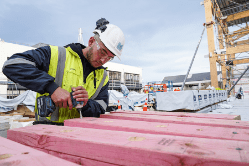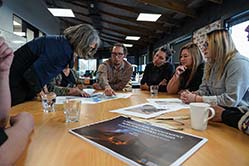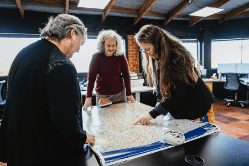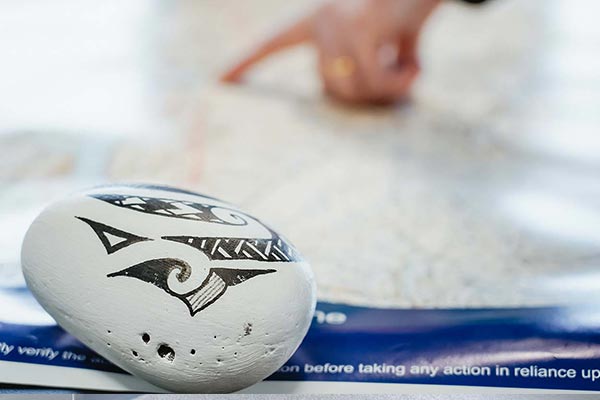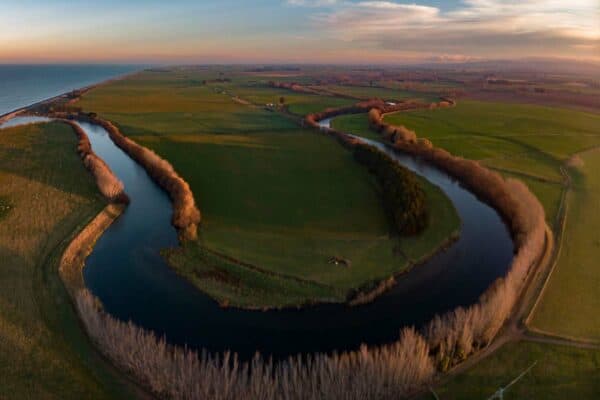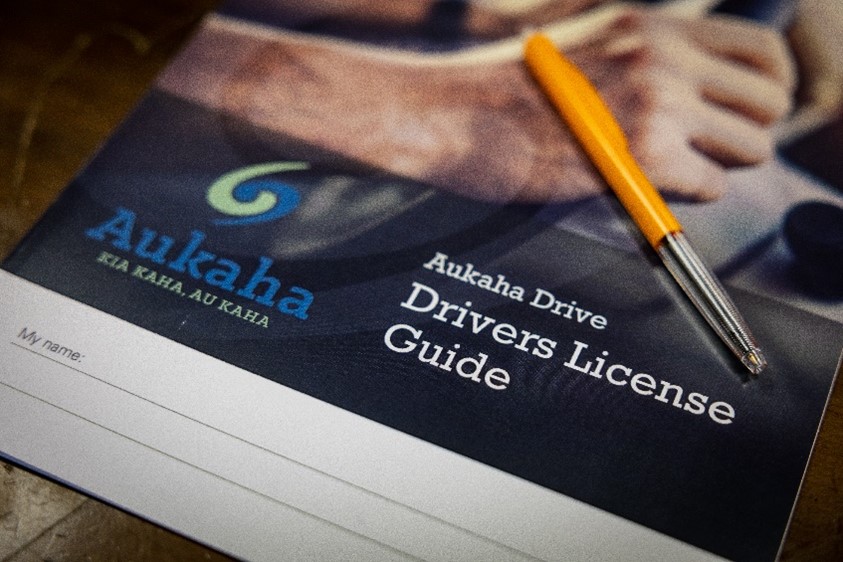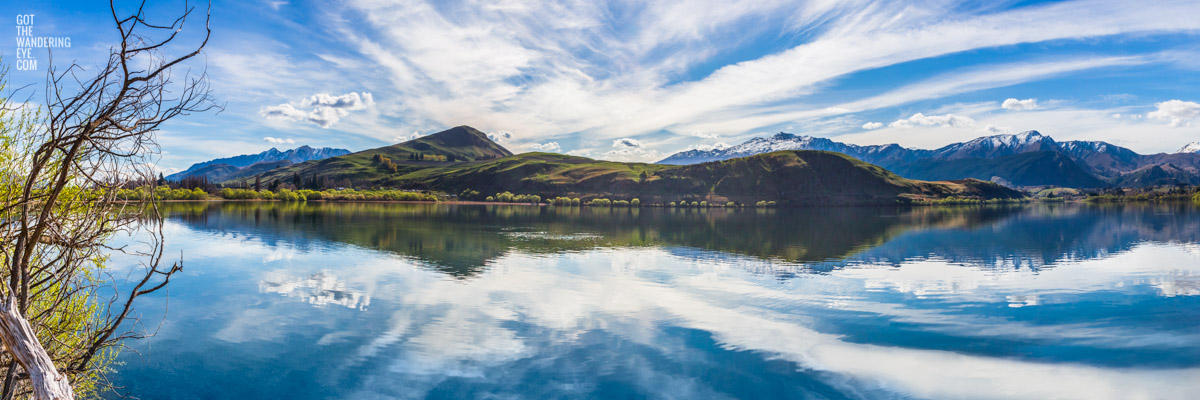Dunedin’s main centre alive with Kāi Tahutaka
Silvery blue lights representing makā (barracouda) dart through the street above while whakatauki, kupu Māori and imagery of matau and makā weave through the pavement below. These are just some of the design features that make up the new main street of Dunedin.

The newly upgraded George Street in Ōtepoti Dunedin is now vibrating with Kāi Tahutaka.
Silvery blue lights representing makā (barracouda) dart through the street above while whakatauki, kupu Māori and imagery of matau and makā weave through the pavement below. These are just some of the design features that make up the new main street of Dunedin.
Mana whenua from Te Rūnanga o Ōtākou and Kāti Huirapa Rūnaka ki Puketeraki opened the street earlier this month with a whakawaatea, acknowledging three years of work undertaken to replace aging infrastructure and incorporate mana whenua values and narratives into the rebuild.
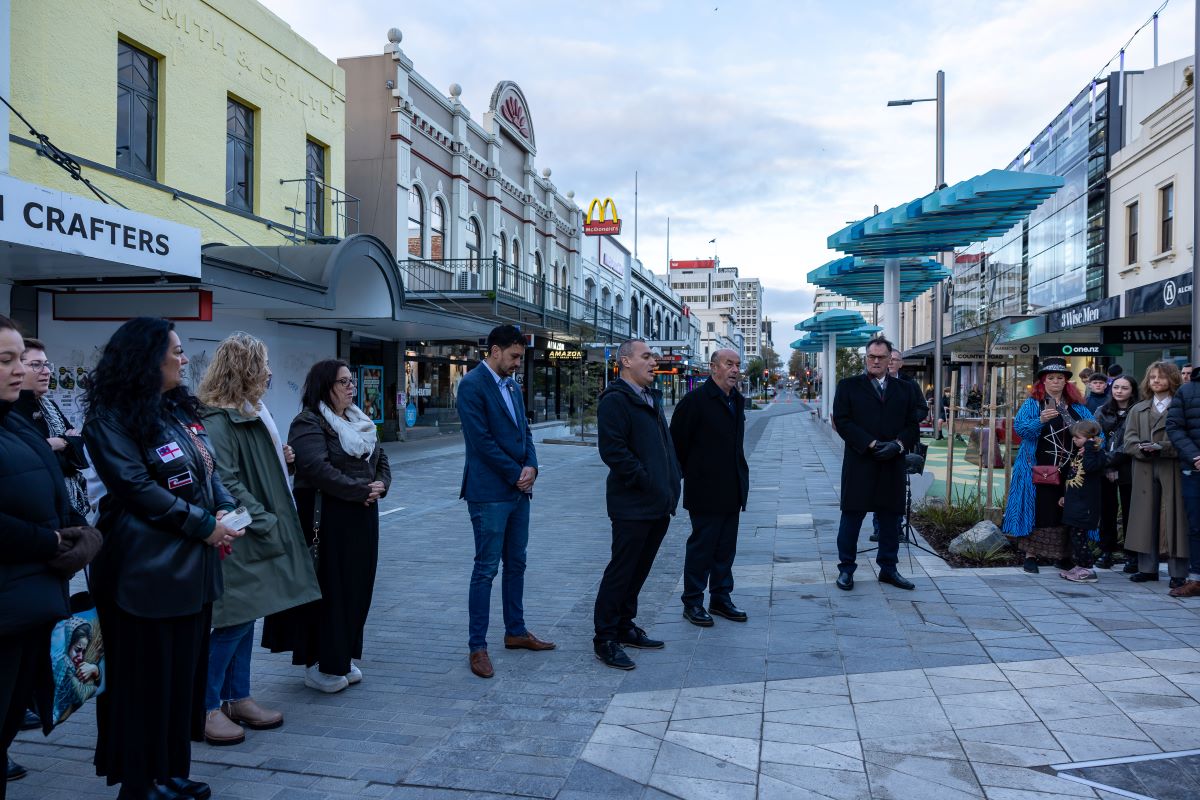
Aukaha was directed by mana whenua to work with the Dunedin City Council (DCC) alongside project partners Jasmax, Aecom and Isaac Construction.
Aukaha’s Mana Ahurea Creative Lead Simon Kaan pulled together Kāi Tahu artists Fayne Robinson, Ephraim Russell and Turumeke Harrington, while design inspirations were based on a George Street narrative written by Ōtākou’s Megan Potiki.
Woven through the street are designs representing aspects of mahika kai, kai hau kai, whakapapa and Ōtepoti.
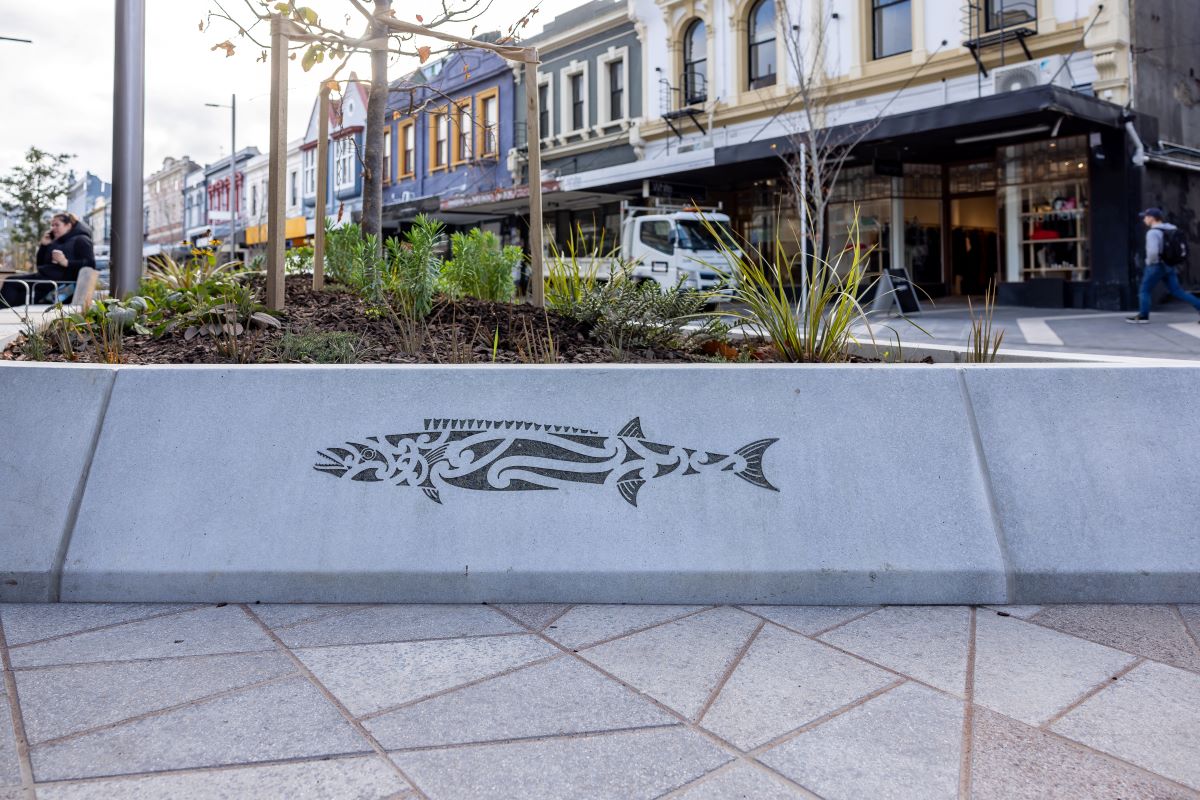
Ms Pōtiki says the opportunity to partner with the DCC has meant being able to reinstate some Kāi Tahu visibility back into the city and our community.
“Now, when my children walk down George St, they will see the kupu (words) of their tīpuna (ancestors) inscribed on the pavements, they will see our cultural practices transferred into contemporary art and celebrations of history and knowledge passed down through generations.”
George Street paving design reflects the name Ōtepoti. The new pavers are a bespoke design developed specifically for Dunedin. The shape of the paver has been derived from the poti, or four-cornered kete.
Designers styled the poti paver to reflect a raraka (weave), representing the weaving of cultures. The patterns also reflect Ōtākou Marae’s stained-glass windows the designs for which are derived from traditional weaving patterns Aramoana and Patiki, which represent mahika kai.
Embedded in the ground, these designs come together to represent the pātiki (flounder) and the ripples caused by its movement in the water.
“Now, when my children walk down George St, they will see the kupu (words) of their tīpuna (ancestors) inscribed on the pavements, they will see our cultural practices transferred into contemporary art and celebrations of history and knowledge passed down through generations.”
– Megan Pōtiki, Te Rūnanga o Ōtākou
Kererū or kūkupa have also played an influential role in the design of George Street.
Kūkupa were an important food source and were abundant around Ōtepoti.
The distinctive green hues of the kūkupa, along with splashes of pale purple and cream provide inspiration for colour accents along the street, specifically in beautiful large scale shade areas over giant seesaws designed by Kāi Tahu Artist Turumeke Harrington.
Snaring birds was an important practice for Kāi Tahu people, and inspired Turumeke’s design for the seesaw and resting place which also features flax snares on the pavement.
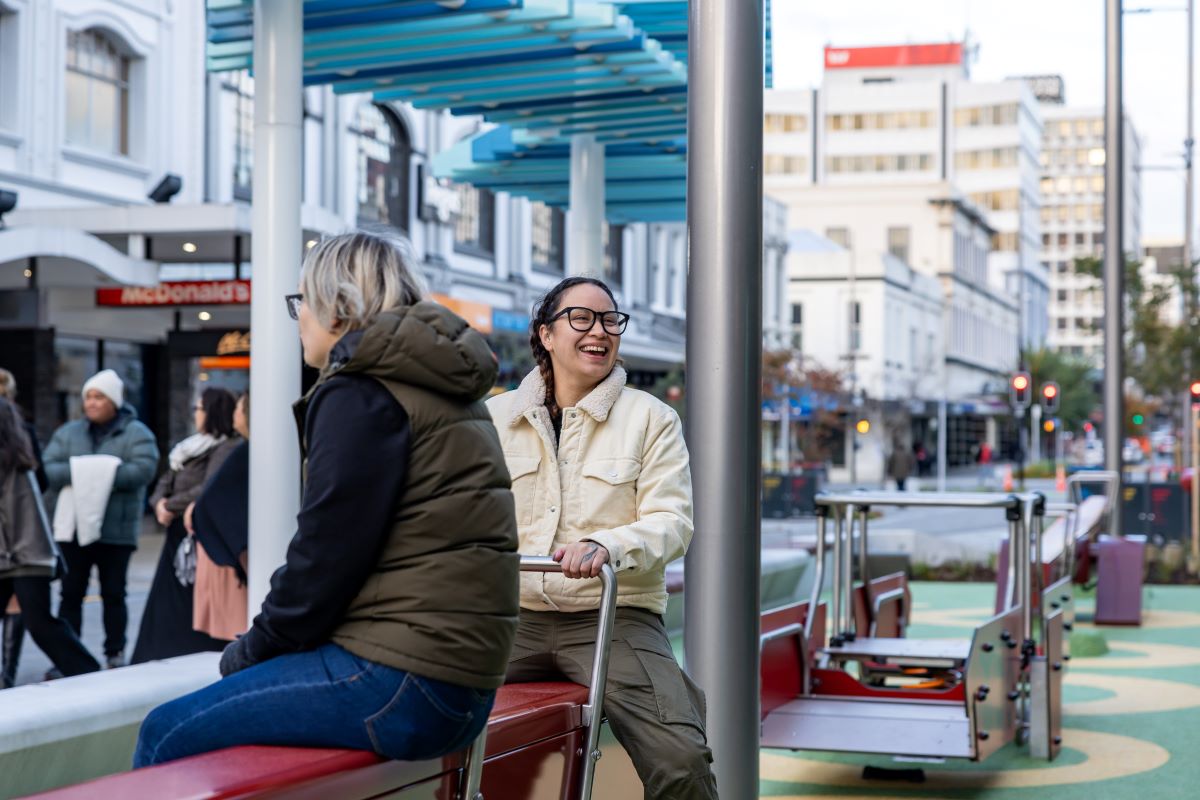

Just north of the seesaws, a cultural map has been embedded into the whenua. This cultural map was developed by the late Tahu Potiki who developed it from his research of Kāi Tahu ki Otago. It contains traditional place names and key locations in the Ōtepoti area.
On the light poles at the beginning and ending of each block, cultural designs and references have been included by way of a graphic wrap on the poles. There are four designs based on the four main whaling stations of the region – Waikouaiti, Pūrākaunui, Moturata (Taiari Island) and Te Umukuri (Weller’s Rock). Each pole is located according to their geography from north to south.
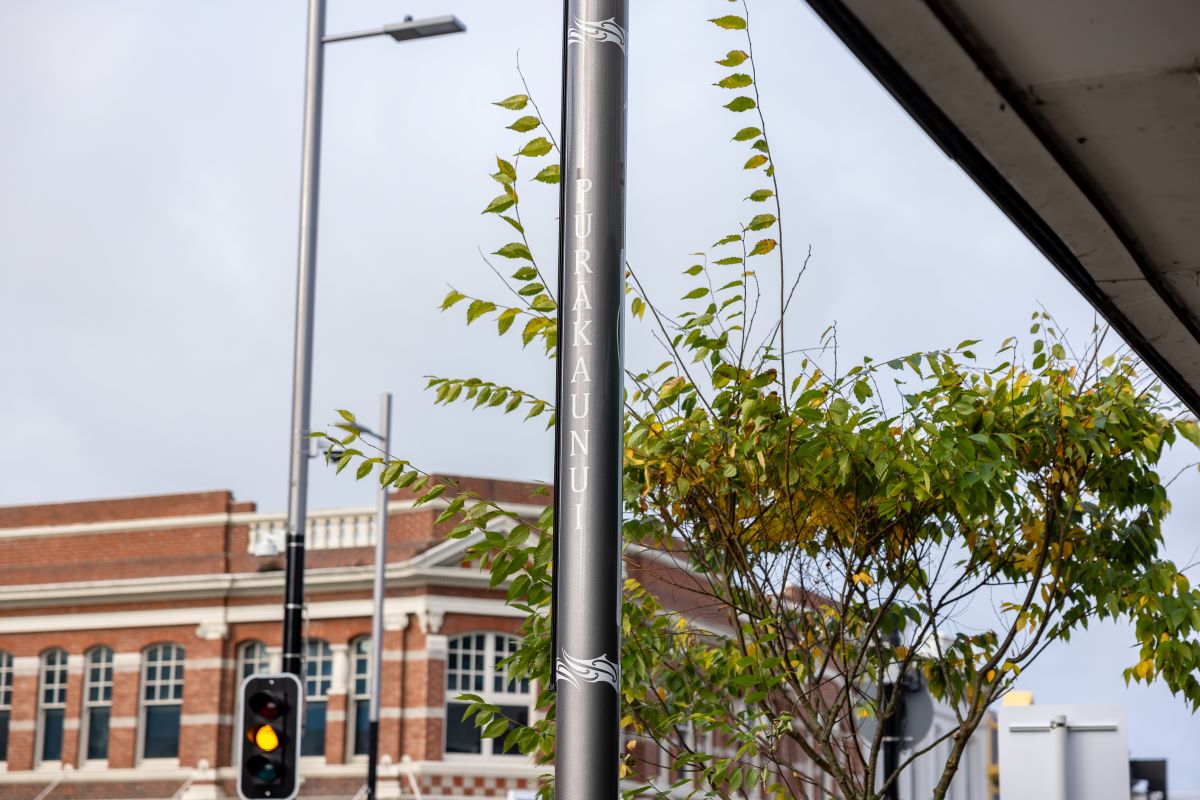
Aukaha Acting Chief Executive Caron Ward says the partnership between mana whenua and the DCC has created a stunning main city centre that celebrates our shared histories and values.
“I’m really proud of the work from our Mana Ahurea team who have worked with our mana whenua advisory panel and the DCC to embrace the importance of Te Tiriti o Waitangi and reflect the concept of partnerships. And George Street is a beautiful example of how we can work together with shared values and provide pathways to a better future for Kāi Tahu, iwi Māori and for our wider communities,” Ms Ward says.
“The culmination of the George Street upgrade brings an immense sense of pride and belonging to everyone – mana whenua, residents and manuhiri – to see our shared histories celebrated in a unique and inclusive way.”
Aukaha is a mana whenua-owned organisation delivering social, economic, environmental, and cultural services across the takiwā of Te Rūnanga o Waihao, Te Rūnanga o Moeraki, Kāti Huirapa Rūnaka ki Puketeraki, Te Rūnanga o Ōtākou, and Hokonui Rūnanga.

